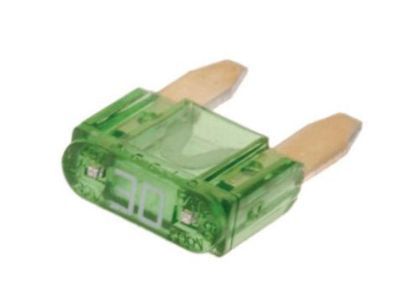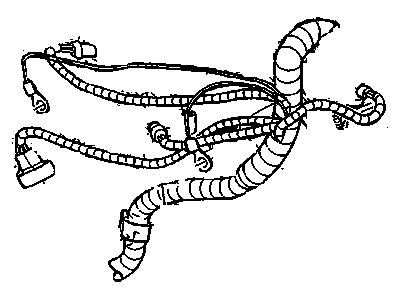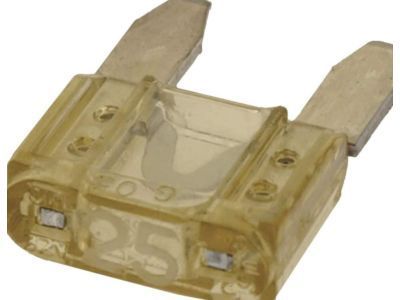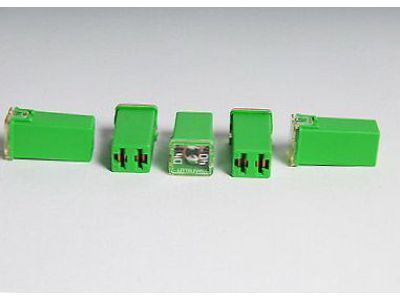
My Garage
My Account
Cart
Genuine Cadillac DTS Fuse
Circuit Fuse- Select Vehicle by Model
- Select Vehicle by VIN
Select Vehicle by Model
orMake
Model
Year
Select Vehicle by VIN
For the most accurate results, select vehicle by your VIN (Vehicle Identification Number).
14 Fuses found
Cadillac DTS Fuse,Mini 20 A
Part Number: 88861352$2.19 MSRP: $4.13You Save: $1.94 (47%)Ships in 1 Business DayCadillac DTS Fuse,Mini 30 A
Part Number: 12092075$0.08 MSRP: $0.16You Save: $0.08 (50%)Ships in 1-3 Business DaysCadillac DTS Fuse,Mini 15 A
Part Number: 88909754$0.08 MSRP: $0.16You Save: $0.08 (50%)Ships in 1-3 Business DaysCadillac DTS Fuse,Mini 25 A
Part Number: 88909756$0.16 MSRP: $0.30You Save: $0.14 (47%)Ships in 1-2 Business DaysCadillac DTS Fuse
Part Number: 84082834$4.66 MSRP: $7.33You Save: $2.67 (37%)Ships in 1-3 Business DaysCadillac DTS Fuse
Part Number: 15319480$5.04 MSRP: $7.93You Save: $2.89 (37%)Ships in 1-3 Business DaysCadillac DTS Fuse,Mini 10 A
Part Number: 12092079$4.23 MSRP: $7.98You Save: $3.75 (47%)Ships in 1-3 Business DaysCadillac DTS FUSE *PINK
Part Number: 84082833$4.79 MSRP: $7.94You Save: $3.15 (40%)Ships in 1-3 Business DaysCadillac DTS Fuse *Red
Part Number: 84082835$5.04 MSRP: $7.94You Save: $2.90 (37%)Ships in 1-3 Business DaysCadillac DTS Fuse,Mini 2 A
Part Number: 19116041$7.27 MSRP: $11.45You Save: $4.18 (37%)Ships in 1-3 Business DaysCadillac DTS 5 Packing Kit Of 5 Amps Minifuse
Part Number: 88864840$0.27 MSRP: $0.50You Save: $0.23 (46%)Cadillac DTS Fuse,Mini 10 A
Part Number: 88909753$4.23 MSRP: $7.98You Save: $3.75 (47%)Ships in 1-3 Business DaysCadillac DTS Fuse,Wiring Harness (Steering Wheel Accessory Control Circuit)
Part Number: 12103081$2.37 MSRP: $3.74You Save: $1.37 (37%)Ships in 1-3 Business DaysCadillac DTS Fuse, 250A Mega (Bolt Down)
Part Number: 15893718$14.40 MSRP: $23.75You Save: $9.35 (40%)Ships in 1-2 Business Days
Cadillac DTS Fuse
Each OEM Cadillac DTS Fuse we offer is competitively priced and comes with the assurance of the manufacturer's warranty for the part. Furthermore, we guarantee the speedy delivery of your orders right to your doorstep. Our hassle-free return policy is also in place for your peace of mind.
Cadillac DTS Fuse Parts Questions & Experts Answers
- Q: What is the purpose of fuses and circuit breakers in electrical circuits on Cadillac DTS?A:Electrical circuits are protected by a combination of fuses and circuit breakers. Models covered have a fuse/relay panel in the engine compartment, as well as an electrical center or fuse/relay panel under the rear seat or in the trunk. A large underhood fuse/relay panel is located in the engine compartment on all models. Most models have a fuse block or an electrical center like this mounted under the rear seat or in the trunk. Each of the fuses is designed to protect a specific circuit, and the various circuits are identified on the fuse panel cover or the fuse panel itself. Miniaturized fuses are employed in the fuse block. These compact fuses, with blade terminal design, allow fingertip removal and replacement. If an electrical component fails, always check the fuse first. The easiest way to check fuses is with a test light. Check for power at the exposed terminal tips of each fuse. If power is present on one side of the fuse but not the other, the fuse is blown. When removed, a blown fuse is easily identified through the clear plastic body. Visually inspect the element for evidence of damage. When a fuse blows, the element between the terminals melts. Be sure to replace blown fuses with the correct type. Fuses of different ratings are physically interchangeable, but only fuses of the proper rating should be used. Replacing a fuse with one of a higher or lower value than specified is not recommended. Each electrical circuit needs a specific amount of protection. The amperage value of each fuse is molded into the fuse body. If the replacement fuse immediately fails, don't replace it again until the cause of the problem is isolated and corrected. In most cases, the cause will be a short circuit in the wiring caused by a broken or deteriorated wire.






















